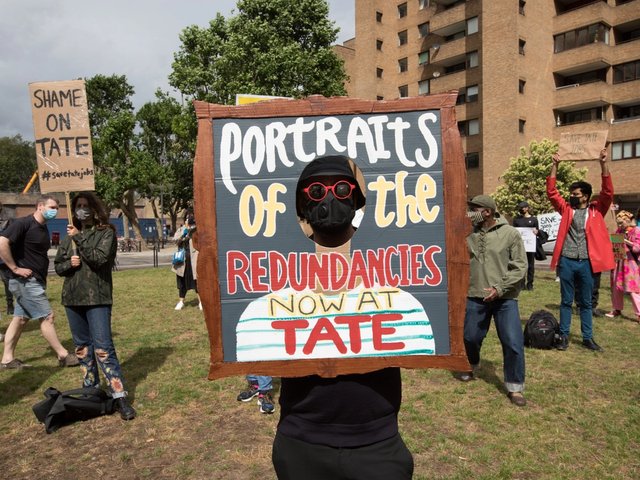Tate has announced plans to reduce its workforce by 12%—equivalent to around 120 full-time roles—due to the Covid-19 pandemic. The institution has subsequently launched a voluntary redundancy scheme “in all departments and at all levels” to save the £4.8m required to "survive the crisis", according to senior museum management. Workers willing to take voluntary redundancy—or consider early retirement, reduced working hours or a career break—are encouraged to take up the offer.
But compulsory redundancies could follow if the museum group fails to save enough. “We hope that this voluntary process will help us make these significant savings, but we cannot rule out having to move to compulsory redundancy in 2021 to meet the necessary level of reductions. If so, we will protect as many jobs as possible and ensure that no area of the workforce is unfairly hit harder than any other,” say Maria Balshaw, Tate director, and Vicky Cheetham, chief operating officer, in a joint statement posted online.
At the end of the financial year next April, Tate expects visitor figures of one million instead of the expected eight million. “For every £10 we were expecting to make this year, we are only receiving £4, and we expect to lose £56m in self-generated income overall,” the statement adds. Tate says it is in consultation with trade unions; at the time of writing, union representatives could not be reached for comment.
Balshaw and Cheetham add that Tate has cut operating budgets in half and reduced salaries for its executive level staff. “We have restructured our retail and catering business to save it from closure and we have taken as much from our emergency reserves as we are allowed,” the statement adds.
Earlier this year, 313 redundancies were announced across Tate Enterprises, which operates retail, catering and publishing services at the four Tate galleries in London, Liverpool and St Ives. Tate Gallery supported Tate Enterprises with £5m from its reserves. In September, the Victoria and Albert Museum in London announced that it is consulting staff on job cuts, with 10% of the workforce facing redundancy. Last month, the Science Museum Group, which runs five institutions including the Science Museum in London, proposed cutting at least 65 full-time equivalent positions which could result in a maximum of 95 redundancies.
UPDATE: There were 295 redundancies across Tate Enterprises, not 313 as initially announced. This was equivalent to 217 full-time roles.
UPDATE: Alan Leighton, National Secretary of the Prospect union, says: “Tate has made clear that it hopes to be able to make staff reductions entirely on a voluntary basis and this is an approach Prospect welcomes. Prospect is working with the employer to ensure the best possible terms for those who do lose their jobs and we hope compulsory redundancies can be avoided.
“Voluntary redundancies are still redundancies however and everyone working in the heritage sector and across the wider tourist economy will be hugely concerned about their jobs for the foreseeable future. The government has to recognise that with no way of generating sufficient external income, further targeted support for the sector is desperately needed to preserve our nation’s incredible cultural heritage."




